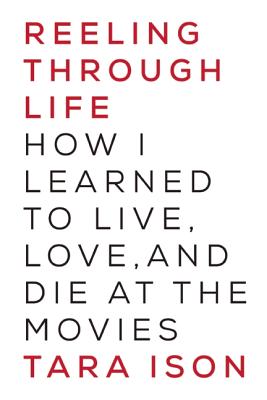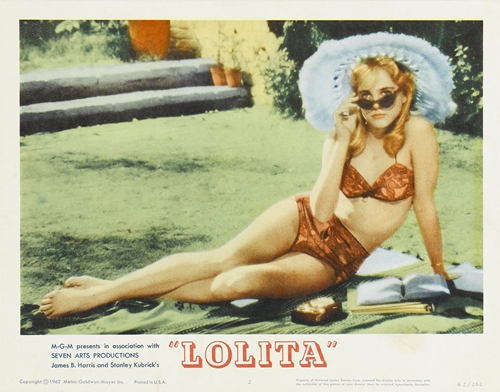By Michael Miller
Who hasn’t left a movie theater carrying the aura of the characters who have leaped from the big screen to leave their imprint on the audience, just as the taste of a fine entrecote steak lingers on the palate long after the last morsel has been savored?
This feeling of being a participant in what she has seen, rather than an observer, has had a profound effect on author Tara Ison. In her insightful new book she analyzes how movies have influenced different aspects of her life, including sex, death and being Jewish.
In “Reeling Through Life: How I Learned to Live, Love and Die at the Movies” (Soft Skull Press. $15.95 soft cover), Ison delves into her inner-self in a series of “How to…” essays such as “How to be Lolita,” “How to Die with Style” and “How to be a Jew.”
Ison’s first Lolita-ish movie experience came at the tender age of six when her parents took her to see “The Prime of Miss Jean Brodie,” in which one of Miss Brodie’s pupils, 17-year-old Sandy, played by Pamela Franklin, is seduced by art teacher Teddy Lloyd (Robert Stephens).
Later, when Ison herself is 17 and yearning to be seduced, she revisits the scene in which Sandy taunts her lover, saying, “How much longer are you going to be tempted by this firm young flesh?” Replies Teddy, “Until you’re 18 and over the hill.”
The words haunt her as she watches 13-year-old Lolita, played by Sue Lyon in the film of the same name, having her sex with the nymphet-fixated much older Humbert (James Mason). Ison realizes that the days of her “firm young flesh” falling to the temptations of seduction are numbered. “What am I? I am seventeen now, and I have only just, at last, gotten my first period. Hello, womanhood,” she bemoans.
But fear not, dear reader, sex is just a few chapters away. In “How to be a Slut,” our heroine relates how she not only blossomed as a promiscuous lover, but did so with both men and women. By her mid-twenties, “I am having delightful or tortured affairs, thrilling sex, falling in lust all over the place.”
Later she falls in love with her best girlfriend and, in an effort to learn “How to be a Lesbian,” starts watching “dreadful movies” that “show lesbian sex in the blandest, most boring way possible.” “Thankfully I go on to sleep with a lot of other women and erase those tepid or faux-lesbian images from my mind forever,” she writes.
Born to a Lutheran father and Jewish mother in Los Angeles, Ison says religion was never a factor in her early childhood. In fact, she was hardly aware of being a Jew – until she was seven and was taken to see the movie version of “Fiddler on the Roof,” starring Topol as the Russian Jewish peasant Tevye, a poor milkman who dreams of being rich one day.
She recalls not so much watching the film, set in the 1890s, but injecting herself into it as one of Tevye’s daughters, delighting in the life of a poor but happy Jewish family. “Our Jewishness is made luminous with candles and copper kettles and fresh milk. We glow with our Jewishness. I became a Jew when I was seven.”
Ison’s introduction to death came at the age of six. In a movie, naturally. It was “Love Story,” the tale of two young lovers, played by Ryan O’Neal and Ali MacGraw, in which MacGraw’s character dies a slow but painless death due to a mystery illness. Then, three years later, death becomes personal when a close friend of the family dies painfully of cancer at the age of 34, and Ison remembers the line from “Love Story,” “A girl like that, so alive, so entitled to live.”
 Ison felt death’s breath herself in her early twenties when she suffered a grand mal seizure and was diagnosed with a brain tumor. She immediately set about planning her death with dignity, planning to go out like Maude, played by Ruth Gordon, in “Harold and Maude” who secretly takes an overdose of pills to hasten her death and is last seen being happily wheeled off on a hospital gurney, twirling a daisy.
Ison felt death’s breath herself in her early twenties when she suffered a grand mal seizure and was diagnosed with a brain tumor. She immediately set about planning her death with dignity, planning to go out like Maude, played by Ruth Gordon, in “Harold and Maude” who secretly takes an overdose of pills to hasten her death and is last seen being happily wheeled off on a hospital gurney, twirling a daisy.
“If I can orchestrate the circumstances of my death, then of course I can be all ready,” writes Ison. “I can meet it beautifully and finely. For months I had been feeling I had a life without the living; now I can have the death without the dying.”
It turned out, however, that Ison did not have a brain tumor, merely a benign cyst. Now she is left to wonder again what death has in store for her. “Will I have lived a life that makes me ready to meet death beautifully and finely? Or will I fight to the last, try to barricade that door, claim every last second, last breath, last beat of my heart before it is the end of the thing that is me, and the thing that is me disappears for ever?”
Tara Ison is the author of the novels “The List,” “A Child Out of Alcatraz,” a Finalist for the Los Angeles Times Book Prize, and “Rockaway,” selected as a 2013 Best Books of Summer by O Magazine. She is also co-writer of the cult film, “Don’t Tell Mom the Babysitter’s Dead.”
Michael Miller is a Los Angeles-based writer.












From FNB readers